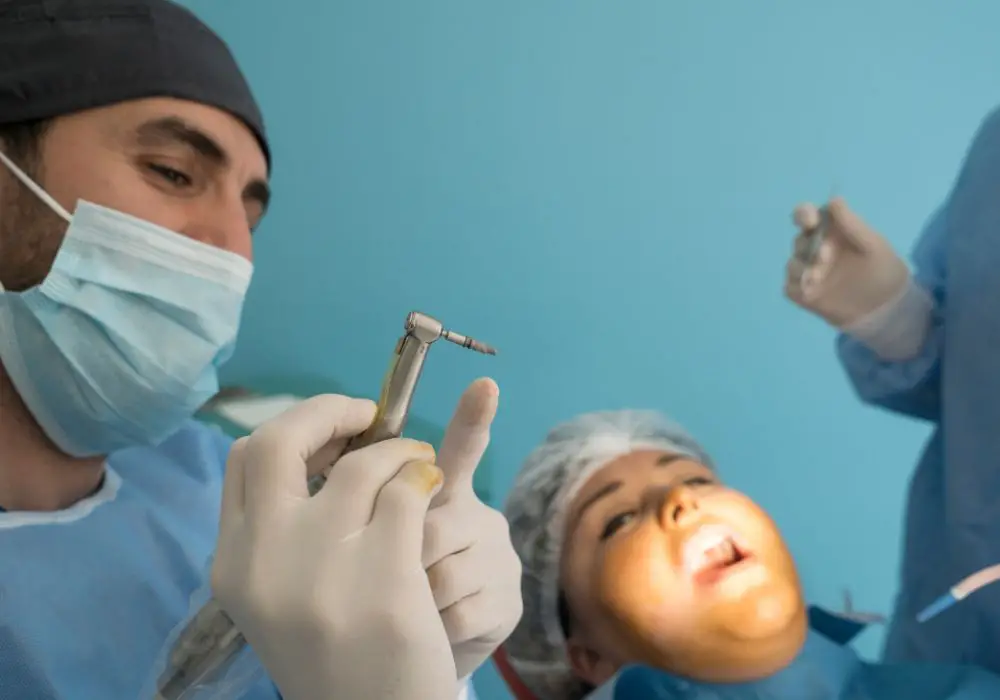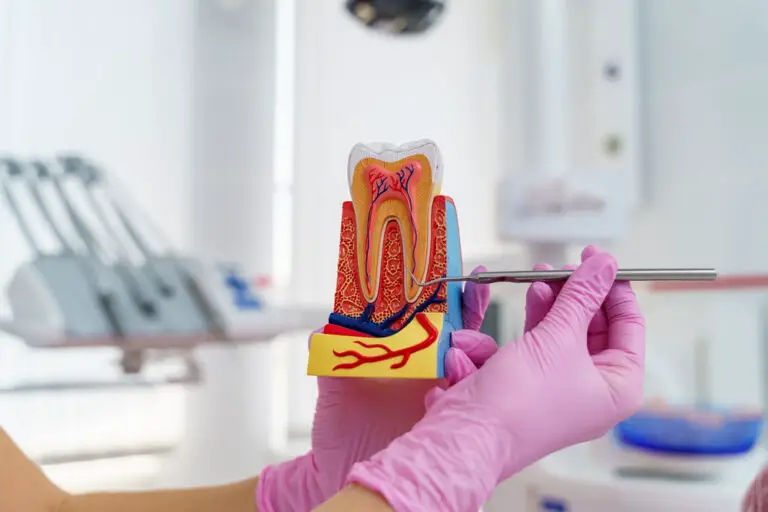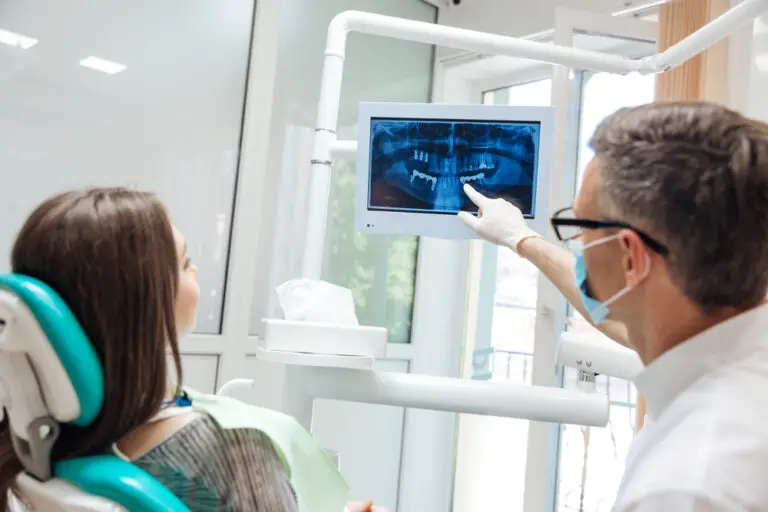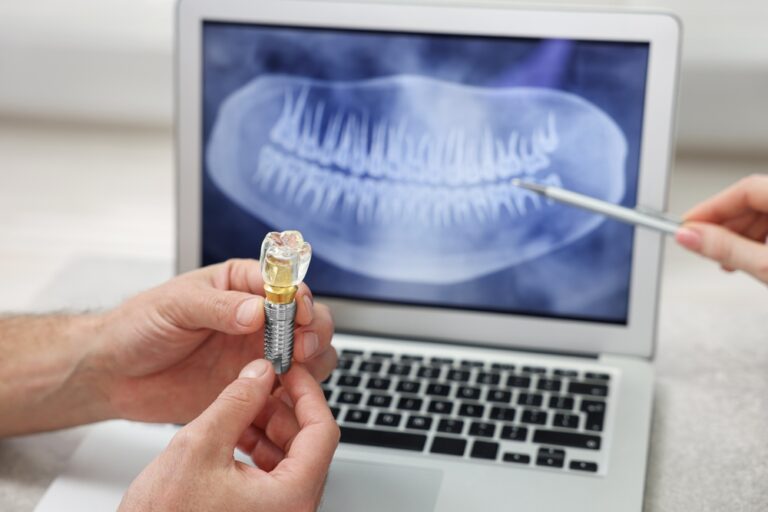Implanting front teeth is a common and effective way to replace missing or damaged teeth. This article explores whether front teeth can be implanted, the benefits and risks, the procedures involved, costs, and frequently asked questions.
Overview of dental implants
Dental implants are artificial tooth roots made of titanium that are surgically placed into the jawbone. An implant crown is then attached to the implant post to create a natural-looking replacement tooth. Implants fuse with the jawbone through a process called osseointegration, providing stability and stimulating bone growth.
There are two main types of dental implants:
- Endosteal implants – These are the most commonly used implants. They are placed directly into the jawbone through surgical incisions. After healing, a prosthetic crown is attached to the post portion of the implant.
- Subperiosteal implants – These consist of a metal framework that sits under the gum tissue but on top of the jawbone. This type is less frequently used and indicated for patients with minimal bone height.
The titanium used for implants is biocompatible, integrates well with bone, and can withstand the load and stress of regular function. Modern surface treatments like plasma spraying and etching enables faster osseointegration.
Implants can be used to replace individual teeth or multiple teeth as part of a dental bridge or denture. Front teeth implants typically involve replacing one or both of the maxillary central incisors. The success rate for dental implants is over 95% and they can last decades with proper care.
Can front teeth be implanted?
Yes, front teeth can be successfully implanted. The maxillary central incisors are commonly extracted and replaced with dental implants. There are several reasons why someone may need front tooth implants:
- Fractured or broken front teeth that cannot be repaired with crowns
- Severely decayed front teeth not amenable to fillings or crowns
- Congenitally missing front teeth
- Front teeth lost due to trauma or injury
- Extraction of front teeth for orthodontic treatment
Implants help restore the natural appearance, speech, chewing ability, and confidence that comes with having front teeth present. Modern techniques make it possible to place implants immediately after tooth extraction or graft bone to provide adequate bone volume for implant placement.
The front part of the upper jaw has abundant bone, making it suitable for implants to replace missing incisors. Advanced imaging like cone beam CTs allow dentists to thoroughly evaluate bone density and volume to plan implant positioning.
With meticulous treatment planning, high primary implant stability can be achieved. Immediate loading with a temporary crown is sometimes possible with front tooth implants.
Benefits of front tooth implants

There are many benefits to choosing dental implants to replace missing or damaged front teeth:
- Natural appearance: Implant crowns are custom-made to match the color, shape and size of your natural teeth. This restores a beautiful, natural smile. They are made from porcelain, ceramic, or zirconia and can be stained to match adjacent teeth.
- Prevents bone loss: The jawbone remains stimulated and preserves volume, preventing facial collapse. This maintains facial aesthetics.
- Adjacent tooth preservation: Unlike bridges, adjacent healthy teeth don’t need grinding down.
- Long lasting: With good oral care, implants can last several decades, compared to 5-10 years for bridges.
- Retains facial profile: Missing front teeth lead to lip collapse and wrinkles around the mouth. Implants prevent this, retaining a youthful facial structure.
- Easy cleaning: Implant crowns can be flossed and brushed like natural teeth. Removable dentures need extra cleaning.
- Better function: Implants offer greater biting force and stability compared to tooth-supported bridges.
- Improves speech: Missing front teeth affect speech. Implants restore normal pronunciation and annunciation.
- Boosts confidence: An attractive smile boosts self-esteem and social confidence.
- Halts drifting: Implants prevent adjacent teeth from shifting or drifting into the space over time.
Potential risks and complications
While highly successful, there are some potential risks and complications to consider for front tooth implants:
- Infection: Poor oral hygiene may lead to infection around the implant known as peri-implantitis. This can cause bone loss.
- Nerve damage: The mandibular incisive nerve may rarely be injured when placing lower incisor implants. This may result in lip numbness.
- Rejection: The body rejects the implant, typically due to uncontrolled diabetes or other health conditions. Immunosuppressants may be needed.
- Bone loss: If the implant does not properly fuse, the bone around it begins to resorb. This leads to loosening.
- Aesthetic problems: The implant crown may not match adjacent teeth exactly in color, shape or size. Additional crown replacements may be needed.
- Damage to adjacent teeth: During surgery, preparation work may accidentally damage nearby teeth. These may then need crowning.
- Sinus complications: The maxillary sinus may be affected when placing upper incisor implants. Injury or infection can occur.
- Inadequate bone: Atrophic jaws may require bone grafting for successful implant integration. This increases costs and recovery time.
- Implant fracture: Trauma from forces like chewing or grinding can lead to rare implant fractures.
With careful planning, modern techniques and a skilled surgeon, risks of complications are low. Proper maintenance and oral hygiene greatly improve the long-term prognosis.
Surgical procedures for front tooth implants
The surgical placement of front tooth dental implants involves several steps:
Step 1: Initial consultation and planning
The dentist takes detailed x-rays, including 3D cone beam CT scans to visualize bone anatomy. Impressions are taken to create stone models that are used for treatment simulation. The dentist checks for adequate interdental space for implant crowns. Medical and dental history is reviewed to screen for any contraindications to implant therapy. A comprehensive treatment plan is formulated.
Step 2: Tooth extraction
If present, the damaged tooth is extracted as atraumatically as possible to preserve bone. The dentist may section the tooth to prevent excessive bone removal. Socket preservation materials are placed to encourage bone regeneration.
Step 3: Grafting procedures
If the bone is inadequate for implant stability, bone augmentation procedures are done to increase bone volume. Common techniques include:
- Sinus lifts – elevates the maxillary sinus floor and grafts bone into the space
- Ridge expansion – carefully fractures the bony ridge to expand width
- Onlay grafts – utilizes bone harvested from the pelvis, chin or ramus to build up the ridge
- Inlay grafts – bone placed directly into defects within the ridge
- Bone substitutes – uses bone-like substances to stimulate bone growth
This provides a solid bony foundation for implants.
Step 4: Implant placement
After adequate healing from any grafting procedures, the implant surgery is scheduled. Local anesthesia is administered. The dentist creates precision osteotomies based on the treatment plan measurements and inserts the titanium implants. The gums are sutured overtop for undisturbed healing.
Step 5: Uncovering and abutment placement
After 3-6 months of healing for the implant to fully integrate with bone, a small procedure is done to expose the implant. An impression post is connected to transfer the implant position, and a custom abutment is fabricated. This acts as the new tooth root.
Step 6: Impression and crown fabrication
An impression is taken of the implant abutment and surrounding teeth. This is sent to a dental laboratory technician to fabricate a custom implant crown with matching shade and contour. The crown is then cemented or screwed onto the abutment.
Step 7: Follow-up care
Regular professional hygiene visits, x-rays and exams help ensure the implants remain healthy and functioning well. The dentist evaluates the stability of the implants and health of the surrounding bone and soft tissues.
Costs of front tooth implants
The costs of front tooth implants depends on several factors but on average ranges between:
- Single tooth implant: $1500 – $3000
- Multiple adjacent front teeth implants: $3000 – $10,000
Here are some of the aspects that influence the overall costs:
- Number of implants being placed and bridge span
- Need for grafting or sinus lift – $500-$2500 per site
- Type of implant material – titanium ($1000), zirconia ($1500), gold ($2500)
- Implant brand and type – premium brands like Straumann cost more
- Custom implant crown type – porcelain ($800), lithium disilicate ($1500), zirconia ($1800)
- Temporary and implant-supported denture costs
- CBCT imaging fees – $300 per scan
- Insurance coverage – dental implants may be partially covered
- Location and dentist/specialist fees – urban and specialist dentists cost more
Many dentists offer payment plans through dental financing companies to break the costs down into affordable monthly payments. Dental tourism to countries like Thailand or Mexico can also help significantly reduce costs.
Recovery after front tooth implants

The recovery process after a front tooth implant procedure involves:
- First 24 hours: Use ice packs for 20 minutes to reduce swelling. Eat soft foods. Take prescribed pain medications as directed. Rest with head elevated. Avoid brushing, rinsing or spitting to protect blood clot.
- First week: Some swelling, bruising and discomfort is normal. Stick to soft nutritious foods. Avoid disturbing the implant site. Use antiseptic chlorhexidine mouthwash. Take ibuprofen for pain management. Cold compresses help minimize swelling.
- 2 weeks post-op: Most swelling should subside. Stitches may be removed if necessary by dentist. Begin gently brushing the area. Start warm saltwater rinses to keep site clean. Transition to normal foods as chewing becomes comfortable.
- 3-6 months post-op: Gradual return to normal brushing and flossing. The implants integrate with the bone during this time. Some follow-up x-rays done to check healing. Mild bone loss up to 1.5mm the first year is normal.
- 3-6 months onwards: The final crown is placed once healing is complete. Maintain excellent oral hygiene around implants to ensure their longevity. Schedule regular professional cleanings and dental checkups every 6 months. Avoid chewing excessively hard foods that may damage implant.
With proper precautions, medications and follow-up care, patients can recover quickly from front tooth implant procedures. Avoid smoking and make healthy lifestyle choices to optimize healing. Report any concerns to the dentist promptly.
Frequently Asked Questions
Here are some common questions regarding front tooth implants:
Are implants a good option to replace front teeth?
Yes, implants are an excellent long-term solution for replacing missing front teeth. They restore full functionality, provide a natural appearance and prevent bone loss compared to alternatives like bridges.
Is the surgical procedure painful?
Local anesthesia is used to completely numb the area during the procedure so it is not painful. Some mild post-surgical discomfort is normal and managed with prescription medications.
How long do front tooth implants last?
With optimal dental hygiene at home and professional cleanings, implants can last several decades. The average lifespan is 20-30 years with proper care and maintenance.
Can implants be placed immediately after tooth extraction?
Immediate implant placement is possible if there is adequate undamaged socket bone and primary stability can be achieved. This prevents waiting for the site to heal before implantation.
Are there age restrictions for dental implants?
Implants can be placed in patients who are fully matured, around age 18-21 years. As long as adequate bone volume exists, there is no upper age limit. Older patients still benefit from implants.
Conclusion
Replacing missing or damaged front teeth with dental implants is a highly predictable procedure with many benefits. Implants help restore the natural appearance and function of front teeth. With accurate planning and execution by an experienced dentist, implants integrate well and serve as an excellent long-term solution. They preserve the facial profile, prevent bone loss, and boost confidence. With proper maintenance, dental implants can dramatically improve quality of life.






